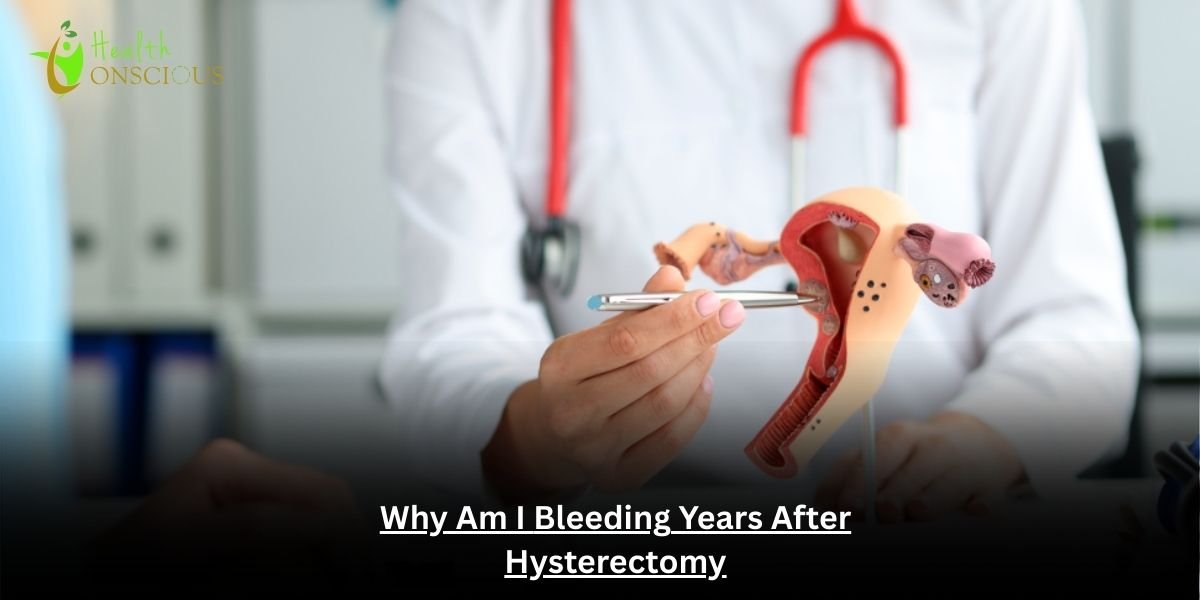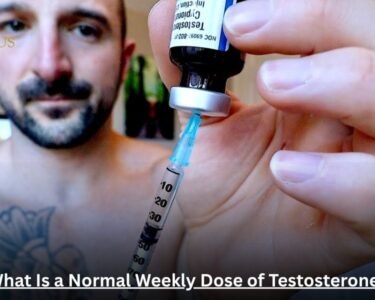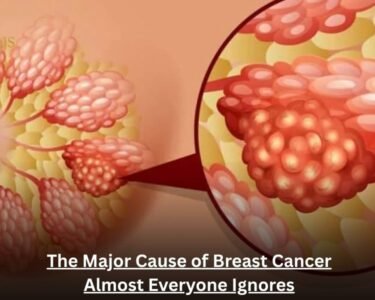A hysterectomy is a surgical procedure to remove the uterus, and sometimes the cervix, ovaries, or fallopian tubes. It is often performed to treat conditions like fibroids, endometriosis, or cancer. While many women experience relief from symptoms after the surgery, some may notice unexpected bleeding years later. This can be alarming and confusing, especially if the procedure was done a decade or more ago.
Bleeding after a hysterectomy, particularly years later, is not something to ignore. It can signal underlying issues that need medical attention. This article will explore why bleeding might occur years after a hysterectomy, including potential causes, risks, and solutions. Whether you’re experiencing bright red bleeding, pink spotting, or other symptoms, understanding the reasons behind it can help you take the right steps toward recovery and peace of mind.
What Is Considered Normal After a Hysterectomy?
After a hysterectomy, the body goes through a healing process that can take several weeks to months. During this time, some bleeding or spotting is normal, especially in the first few weeks. For example, bright red bleeding three weeks after a hysterectomy is often part of the healing process as the surgical site recovers.
However, bleeding that persists beyond the initial recovery period or starts years later is not typical and should be evaluated. Normal post-surgery bleeding is usually light and may appear as pink or brown discharge. If you notice heavy bleeding, bright red blood, or bleeding accompanied by pain, fever, or a foul odor, it’s time to consult your doctor. These symptoms could indicate complications that need prompt attention.
Common Causes of Bleeding After Hysterectomy
Bleeding after a hysterectomy can occur at different stages, and the causes vary depending on how long it has been since the surgery.
Immediate Post-Surgery Bleeding (Weeks to Months):
- Healing Process: After the surgery, the body forms scar tissue as it heals. Light bleeding or spotting is common during this time.
- Bright Red Bleeding 3 Weeks After Hysterectomy: This can occur if the surgical site is still healing or if there’s minor trauma to the area.
Long-Term Bleeding (Years Later):
- Vaginal Atrophy or Dryness: Reduced estrogen levels can cause the vaginal walls to thin and become irritated, leading to bleeding.
- Granulation Tissue Formation: Sometimes, scar tissue at the vaginal cuff (the top of the vagina after the uterus is removed) can form granulation tissue, which may bleed.
- Hormonal Changes or Imbalances: If the ovaries were not removed, hormonal fluctuations can still cause bleeding.
- Residual Ovarian Tissue: In cases of partial hysterectomy, leftover ovarian tissue can cause bleeding.
- Infections or Pelvic Inflammatory Disease: Infections in the pelvic area can lead to inflammation and bleeding.
Why Am I Bleeding 10 Years After a Hysterectomy?
Bleeding a decade after a hysterectomy is rare but can happen due to several reasons:
- Development of Polyps or Cysts: Benign growths in the vaginal or pelvic area can cause bleeding.
- Recurrence of Underlying Conditions: Conditions like endometriosis or adenomyosis can return, leading to bleeding.
- Trauma or Injury to the Vaginal Cuff: Physical strain or injury can cause the vaginal cuff to tear or bleed.
- Cancer or Precancerous Conditions: In rare cases, bleeding years after a hysterectomy could indicate vaginal, cervical, or pelvic cancer.
If you’re experiencing bleeding 10 years after a hysterectomy, it’s crucial to see your doctor for a thorough evaluation. Early detection of any underlying issues can improve treatment outcomes.
Pink Spotting Years After Hysterectomy: What Does It Mean?
Pink spotting is different from active bleeding. It’s usually light and may appear as a faint pink discharge. While it’s often less concerning than heavy bleeding, it can still signal an issue that needs attention.
Potential Causes of Pink Spotting:
- Hormonal Fluctuations: Even after a hysterectomy, hormonal changes can cause light spotting.
- Minor Irritation: Activities like intercourse or a pelvic exam can irritate the vaginal walls, leading to spotting.
- Granulation Tissue: As mentioned earlier, this tissue can cause light bleeding or spotting.
When to See a Doctor:
If pink spotting persists, becomes heavier, or is accompanied by pain, itching, or an unusual odor, it’s important to seek medical advice. Your doctor can determine the cause and recommend appropriate treatment.
When to Seek Medical Attention
While some bleeding after a hysterectomy can be normal, certain symptoms should never be ignored. Recognizing the red flags can help you take action before a minor issue becomes a major problem.
Red Flags to Watch For:
- Heavy or Bright Red Bleeding: If you’re soaking through pads quickly or notice bright red blood, it could indicate a serious issue like a tear or internal bleeding.
- Bleeding Accompanied by Pain, Fever, or Foul Odor: These symptoms may signal an infection or other complications that need immediate attention.
- Persistent Spotting or Bleeding That Doesn’t Resolve: Light spotting that continues for weeks or starts years after your hysterectomy should be evaluated.
Why Timely Medical Evaluation Matters:
Ignoring these symptoms can lead to worsening conditions, such as infections spreading or untreated growths becoming more serious. Early diagnosis and timely treatment can help avoid complications and offer reassurance. If you’re experiencing any of these red flags, contact your healthcare provider right away.
Diagnosing the Cause of Post-Hysterectomy Bleeding
If you’re bleeding years after a hysterectomy, your doctor will likely perform several tests to determine the cause. Here’s what typically happens during the diagnostic procedure:
1. Pelvic Exam:
A physical examination of the vaginal area to check for abnormalities like granulation tissue, tears, or signs of infection.
2. Ultrasound or Imaging:
An ultrasound or MRI may be used to visualize the pelvic area and identify issues like cysts, polyps, or scar tissue.
3. Biopsy (If Cancer Is Suspected):
If there’s a concern about cancer, a small tissue sample may be taken from the vaginal cuff or surrounding area for testing.
4. Hormonal Level Testing:
Blood tests can check hormone levels, especially if your ovaries were not removed during the hysterectomy. Hormonal imbalances can sometimes cause bleeding.
These tests help pinpoint the exact cause of your bleeding, allowing your doctor to recommend the most effective treatment.
Treatment Options for Bleeding After Hysterectomy
The treatment for post-hysterectomy bleeding depends on the underlying cause. Here’s a look at both non-surgical and surgical treatment options available:
Non-Surgical Treatments:
- Hormone Therapy for Vaginal Atrophy: If thinning vaginal walls are causing bleeding, estrogen creams or hormone replacement therapy (HRT) can help.
- Antibiotics for Infections: If an infection is the culprit, a course of antibiotics can clear it up and stop the bleeding.
- Topical Treatments for Granulation Tissue: Silver nitrate or other topical treatments can be applied to granulation tissue to stop bleeding and promote healing.
Surgical Treatments:
- Removal of Polyps or Cysts: If growths are causing the bleeding, a minor surgical procedure can remove them.
- Repair of Vaginal Cuff Tears: If the vaginal cuff has torn, surgery may be needed to repair it.
- Additional Surgery for Severe Cases: In rare cases, further surgery may be required to address complications like recurrent endometriosis or cancer.
Your doctor will recommend the best treatment based on your specific situation.
Long-Term Risks and Complications
While most women recover well after a hysterectomy, some may experience long-term risks or complications that can lead to bleeding years later.
1. Vaginal Cuff Dehiscence (Rare but Serious):
This occurs when the vaginal cuff (the top of the vagina) tears open after surgery. It’s rare but can cause severe bleeding and requires immediate medical attention.
2. Chronic Pelvic Pain:
Some women develop ongoing pelvic pain after a hysterectomy, which can be linked to scar tissue, nerve damage, or other factors.
3. Impact on Sexual Health:
Vaginal dryness, pain during intercourse, or changes in libido can occur after a hysterectomy, especially if the ovaries were removed. These issues can sometimes lead to bleeding.
4. Rare but Serious Conditions:
In some cases, bleeding years after a hysterectomy may indicate rare conditions like vaginal or pelvic cancer. Early detection plays a crucial role in ensuring successful treatment outcomes.
Studies published on PubMed and expert insights from Sutter Health emphasize the importance of monitoring long-term symptoms and seeking medical advice if bleeding occurs years after a hysterectomy.
Preventing and Managing Long-Term Symptoms
After undergoing a hysterectomy, taking steps to care for your vaginal and overall health can make a significant difference in preventing complications like bleeding. Here’s how you can stay proactive:
1. Schedule Regular Pelvic Exams:
Annual check-ups with your gynecologist are essential. These visits allow your doctor to monitor your vaginal and pelvic health, catching potential issues like infections or granulation tissue early.
2. Use Vaginal Moisturizers or Lubricants:
Vaginal dryness is a common concern, especially if your ovaries were removed during the hysterectomy. Over-the-counter moisturizers or water-based lubricants can help keep tissues hydrated and reduce irritation that might lead to bleeding.
3. Consider Hormonal Support:
If you’re experiencing symptoms of low estrogen, such as vaginal thinning or hot flashes, talk to your doctor about hormone replacement therapy (HRT) or topical estrogen treatments. These can help restore vaginal health and reduce bleeding risks.
4. Adopt Healthy Lifestyle Habits:
- Eat a balanced diet rich in fruits, vegetables, and whole grains to support tissue repair and overall health.
- Stay hydrated to maintain healthy vaginal tissues.
- Refrain from smoking, as it can hinder blood circulation and delay the healing process.
- Practice pelvic floor exercises to strengthen the muscles in your pelvic area, which can improve comfort and reduce the risk of complications.
By taking these steps, you can minimize the risk of long-term symptoms and enjoy a better quality of life after your hysterectomy.
Life After Hysterectomy: What to Expect
A hysterectomy is a major surgery, and it’s natural to wonder how it will affect your life in the long term. Here’s what you might experience and how to manage it:
Physical Changes:
- Menopause Symptoms (If Ovaries Were Removed): You may experience hot flashes, night sweats, or vaginal dryness. Hormone therapy or lifestyle adjustments can help manage these symptoms.
- Changes in Sexual Health: Some women notice a decrease in libido or discomfort during intercourse. Open communication with your partner and doctor can help you find solutions, such as lubricants or counseling.
- Weight Management: Hormonal changes can affect your metabolism. Staying active and eating a balanced diet can help you maintain a healthy weight.
Emotional Changes:
It’s normal to feel a mix of emotions after a hysterectomy, from relief to sadness or anxiety. Talking to a therapist or joining a support group can help you process these feelings and connect with others who understand your experience.
Living a Healthy Life:
Most women go on to live active, fulfilling lives after a hysterectomy. By staying proactive about your health and addressing any concerns early, you can enjoy a high quality of life.
Emotional and Psychological Impact of Post-Hysterectomy Bleeding
Unexpected bleeding years after a hysterectomy can be more than just a physical concern—it can take an emotional toll as well. Many women feel anxious, frustrated, or even scared when they notice bleeding long after their surgery.
Why It’s Emotionally Challenging:
- Bleeding can trigger fears of serious health problems, such as cancer or complications from the surgery.
- The uncertainty of not knowing the cause can lead to stress and emotional strain.
Tips for Coping and Finding Support:
- Talk to Your Doctor: A clear explanation of the cause and a treatment plan can ease your worries. Don’t hesitate to ask questions or seek a second opinion if needed.
- Join a Support Group: Connecting with other women who’ve had similar experiences can provide comfort and practical advice. Online forums or local groups can be great resources.
- Practice Self-Care: Engage in activities that help you relax and reduce stress, such as yoga, meditation, or spending time with loved ones.
Insights from Dr. Shweta Shah’s Blog:
Dr. Shweta Shah, a leading gynecologist, emphasizes the importance of addressing both the physical and emotional aspects of post-hysterectomy symptoms. She encourages women to seek support and not hesitate to ask questions about their health. You can read more about her insights here.
Conclusion
Bleeding years after a hysterectomy can be unsettling, but understanding the potential causes and solutions can help you take control of your health. From common issues like vaginal atrophy and granulation tissue to rare conditions such as cancer, there are many reasons why bleeding might occur.
If you’re experiencing bleeding after a hysterectomy, don’t ignore it. Consult a healthcare professional to identify the underlying cause and discuss possible treatment options. Whether it’s hormone therapy, antibiotics, or surgery, timely intervention can resolve the issue and improve your quality of life.
Remember, you’re not alone in this journey. Many women face similar challenges after a hysterectomy, and support is available. By staying informed and proactive, you can live a healthy, fulfilling life. If you have any concerns about bleeding after a hysterectomy, consult your healthcare provider for personalized advice.
Bleeding After Hysterectomy Related FAQs
Is Bleeding After a Hysterectomy Normal?
Light bleeding or spotting is normal in the first few weeks after a hysterectomy as your body heals. However, bleeding that occurs months or years later is not typical and should be evaluated by a doctor.
Why Am I Bleeding 10 Years After a Hysterectomy?
Bleeding a decade after a hysterectomy can be caused by several factors, including vaginal atrophy, granulation tissue, hormonal changes, or even rare conditions like polyps, cysts, or cancer. It’s important to see your doctor to determine the exact cause.
What Does Bright Red Bleeding 3 Weeks After a Hysterectomy Mean?
Bright red bleeding three weeks after surgery could indicate that the surgical site is still healing or that there’s minor trauma to the area. However, if the bleeding is heavy or accompanied by pain, fever, or a foul odor, contact your doctor immediately.
Can Pink Spotting Years After a Hysterectomy Be Harmless?
Pink spotting can sometimes be harmless, especially if it’s light and occasional. It may be caused by hormonal fluctuations, minor irritation, or granulation tissue. However, if the spotting persists or increases, it’s best to get it checked out.
What Causes Vaginal Bleeding Years After a Hysterectomy?
Common causes include vaginal atrophy, granulation tissue, hormonal imbalances, or infections. In rare cases, it could be due to polyps, cysts, or cancer. A thorough medical evaluation is necessary to identify the cause.
Is Bleeding After a Hysterectomy 1 Year Later a Cause for Concern?
Yes, bleeding a year after a hysterectomy is not normal and should be investigated. It could be due to issues like granulation tissue, hormonal changes, or infections. Your doctor can perform tests to determine the cause and recommend treatment.
When Should I See a Doctor for Bleeding After a Hysterectomy?
You should seek medical attention if:
- The bleeding is heavy or bright red.
- It’s accompanied by pain, fever, or a foul odor.
- The bleeding persists or worsens over time.
- You notice spotting or bleeding years after your surgery.
What Are the Treatment Options for Bleeding After a Hysterectomy?
Treatment depends on the cause. Non-surgical options include hormone therapy, antibiotics, or topical treatments. Surgical options may involve removing polyps, repairing the vaginal cuff, or addressing other underlying issues.
Can Lifestyle Changes Help Prevent Bleeding After a Hysterectomy?
Yes, maintaining a healthy lifestyle can help. Stay hydrated, eat a balanced diet, avoid smoking, and practice pelvic floor exercises. Regular pelvic exams and using vaginal moisturizers can also support vaginal health.
How Can I Cope with the Emotional Impact of Post-Hysterectomy Bleeding?
Unexpected bleeding can be stressful. Talking to your doctor, joining a support group, and practicing self-care (like yoga or meditation) can help you manage anxiety and emotional distress.




1 Comment
Comments are closed.